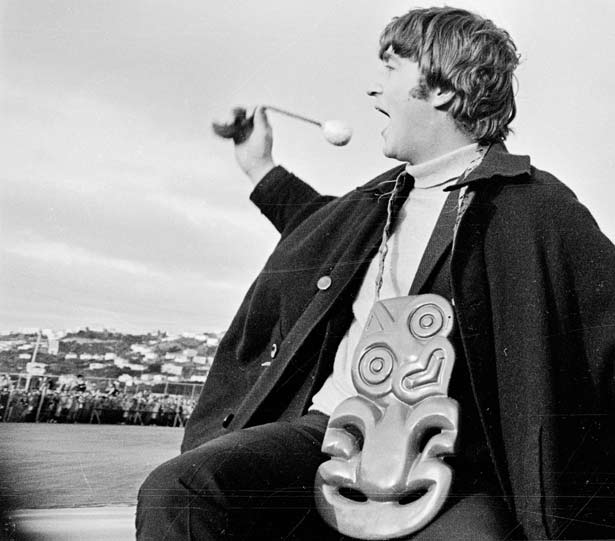
'We love you, yeah, yeah, yeah!'
Everything changed after The Beatles came.
Rachel Stace, Beatles fan
Revolution in the form of four young Liverpool musicians hit Wellington on a lazy Sunday afternoon, 21 June 1964. Seven days of pandemonium erupted as young New Zealanders flocked to hear or just catch a glimpse of the 'Fab Four'. For some New Zealanders, it was the moment the 1960s began in earnest.
The Beatles New Zealand tour, 1964
21 June The Beatles arrive.
22 and 23 June Wellington concerts *
24 and 25 June Auckland concerts *
26 June Dunedin concert *
27 June Christchurch concert
28 June The Beatles leave.
*Played two shows per day, 6 p.m. and 8.30 p.m.
Nobody could have seen the impact of the tour. 'Beatlemania' had already hit Australia, but locals did not expect New Zealanders to act in the same way. New Zealand teenagers were thought to be 'rather more balanced'. Events would prove otherwise. Police officer Bill Brien said the hysteria among Beatles fans was matched only by the mass protests against the touring Springbok rugby team in 1981.
Older New Zealanders, shaped by the Depression and war, seemed bewildered and alarmed at their children’s reaction. Was it ‘a manifestation of the old tom-tom jungle cult – the beat that sends the immature mind into ecstasies merely by repetition?’ one asked. Months of discussion and soul-searching followed the tour.
Over 40 years on, The Beatles’ visit can be seen as the moment that young New Zealand plugged into an international youth culture. Artists such as The Beatles and Bob Dylan expressed the values of a new generation. The globe-shrinking technologies of television and jet aircraft gave young New Zealanders a new rapport with the world outside, a world in which they were no different from millions of other teenagers.

